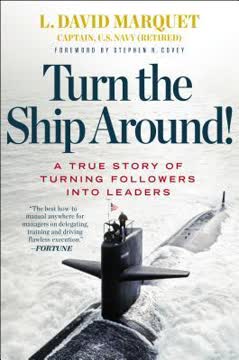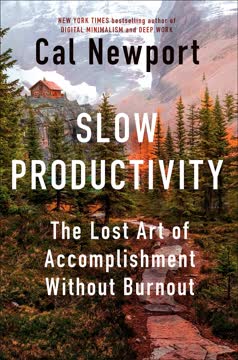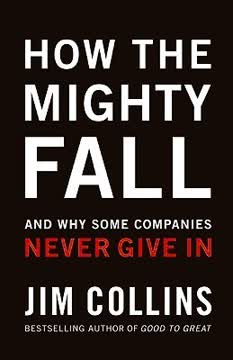Key Takeaways
1. Silos are barriers that turn colleagues into competitors
Silos—and the turf wars they enable—devastate organizations. They waste resources, kill productivity, and jeopardize the achievement of goals.
Silos are organizational barriers that create division and competition between departments that should be working together. These barriers often arise not from intentional actions, but from a lack of clear, shared purpose. When employees lack context for their work, they pursue individual agendas, assuming they're acting in the organization's best interest. Over time, this leads to confusion, disappointment, and eventually hostility between departments.
The impact of silos is far-reaching. They:
- Waste resources on duplicate efforts
- Reduce overall productivity
- Hinder achievement of organizational goals
- Create frustration and stress among employees
- Lead to higher turnover rates
- Affect personal lives of employees
2. Crises unite teams by providing a common purpose
A crisis brings out the best in companies.
Crises naturally unite teams by providing a clear, urgent purpose that transcends departmental boundaries. In times of crisis, people instinctively put aside their differences and work together towards a common goal. This phenomenon demonstrates that silos are not inevitable, but rather a result of unclear priorities in normal circumstances.
However, crises are double-edged swords. They can:
- Unite teams around a common purpose
- Bring out the best in people and organizations
- Tear organizations apart if not managed properly
The key is for leadership to harness the unifying power of a crisis without waiting for an actual emergency to occur.
3. A thematic goal serves as a rallying cry for the organization
If everything is important, then nothing is.
A thematic goal is a single, qualitative focus that applies to the entire organization for a specific time period. It serves as a rallying cry, aligning all departments and providing context for decision-making. Unlike long-term visions or tactical objectives, a thematic goal bridges the gap between the two, making the vision more tangible and giving context to daily activities.
Key characteristics of a thematic goal:
- Single: Only one true thematic goal at a time
- Qualitative: Not a number, but a general statement of desired accomplishment
- Time-bound: Applies for a specific period (usually 3-12 months)
- Shared: Applies to everyone on the leadership team, regardless of their area of expertise
4. Defining objectives give actionable context to the thematic goal
Without that rallying cry, though, it would have been impossible to know what the five building blocks were.
Defining objectives clarify the thematic goal by breaking it down into actionable components. They provide the context needed for team members to understand what must be done to accomplish the overarching goal. Like the thematic goal, defining objectives are qualitative and shared across the entire team.
Characteristics of defining objectives:
- Qualitative: Avoid overquantification to encourage broader involvement
- Shared: All leaders assume accountability, even outside their expertise
- Time-bound: Change when the thematic goal is no longer valid
Defining objectives allow leaders from different departments to contribute ideas and insights, even in areas outside their immediate expertise.
5. Standard operating objectives are ongoing priorities
Standard operating objectives often include topics like revenue and expenses, as well as other items like customer satisfaction, productivity, market share, quality, and the like.
Standard operating objectives are the ongoing priorities that don't change from period to period. They represent the constant focus areas essential for the organization's operation. While crucial, these objectives should not be confused with the thematic goal, which is specific to a particular time frame and situation.
Examples of standard operating objectives:
- Revenue and expenses
- Customer satisfaction
- Productivity
- Market share
- Quality
It's important to resist the temptation to use these ongoing objectives as rallying cries, as this can lead to cynicism and fatigue among employees.
6. Metrics provide measurable targets, but context is crucial
Even the most driven employees—including executives—will not be as motivated for hitting the numbers if they don't understand how they fit into the bigger picture.
Metrics offer quantifiable targets, but they are most effective when placed in the context of the thematic goal and defining objectives. Without this context, even the most motivated employees may struggle to find meaning in achieving numerical targets.
Key points about metrics:
- Should be established after the thematic goal, defining objectives, and standard operating objectives
- Not always quantifiable numbers; can include completion dates
- Avoid artificially assigning numbers to unmeasurable activities
- Must contribute to the overall thematic goal
7. Leadership teams must transcend functional roles
That means executives must remove their functional hats, the ones that say finance or marketing or sales, and replace them with generic ones that say executive.
Effective leadership requires transcending functional roles. Executives must be willing to contribute ideas and ask questions outside their areas of expertise. This approach fosters a more holistic view of the organization and often leads to innovative solutions.
Benefits of transcending functional roles:
- Encourages diverse perspectives
- Promotes cross-departmental collaboration
- Leads to more innovative solutions
- Reduces silo mentality at the leadership level
8. Patience and perspective are key in identifying the right thematic goal
Often the thematic goal is deceptively simple.
Identifying the right thematic goal requires patience and perspective. Leadership teams should allow time for discussion without rushing to a decision. Initial ideas for a thematic goal often turn out to be defining objectives instead.
Tips for identifying the thematic goal:
- Be patient and allow for thorough discussion
- Constantly question if an idea is truly the thematic goal or a defining objective
- Consider seeking input from consultants or employees deeper in the organization
- Don't overthink it; sometimes the simplest answer is correct
9. The thematic goal model applies across diverse industries
There is no definitive way to answer that question because it depends on what the leaders want to do with the business.
The thematic goal model is versatile and applicable across various industries and organizational types. Whether in pharmaceuticals, fast food, or non-profits, the principles of aligning teams around a common goal remain effective.
Key points about applying the model:
- Adapt the timeframe to fit your industry's business cycle
- Tailor defining objectives to your specific organizational needs
- Ensure standard operating objectives reflect your industry's key performance indicators
- Remember that the right thematic goal depends on leadership's vision for the organization
Last updated:
FAQ
What's "Silos, Politics and Turf Wars" about?
- Leadership Fable: The book is a leadership fable that explores the destructive impact of silos, politics, and turf wars within organizations.
- Main Theme: It focuses on how these barriers turn colleagues into competitors and offers strategies to dismantle them.
- Storyline: Through a fictional narrative, the book illustrates the challenges faced by a consultant, Jude Cousins, as he helps various organizations overcome internal divisions.
- Practical Solutions: The book provides a model for creating a unified organizational focus to eliminate silos and improve collaboration.
Why should I read "Silos, Politics and Turf Wars"?
- Understanding Silos: It offers insights into the common problem of silos in organizations and how they hinder productivity and morale.
- Practical Advice: The book provides actionable strategies for leaders to create a cohesive work environment.
- Engaging Format: Presented as a fable, it combines storytelling with practical lessons, making it an engaging read.
- Leadership Development: It is valuable for anyone in a leadership role looking to improve team dynamics and organizational health.
What are the key takeaways of "Silos, Politics and Turf Wars"?
- Thematic Goal: Establishing a single, overarching goal for the organization is crucial to align efforts and break down silos.
- Defining Objectives: These are the specific actions needed to achieve the thematic goal, providing clarity and focus.
- Shared Responsibility: Leaders must work beyond their departmental roles and collaborate towards the common goal.
- Ongoing Objectives: Standard operating objectives should be maintained alongside the thematic goal to ensure overall organizational health.
How does Patrick Lencioni define a "thematic goal"?
- Single Focus: A thematic goal is a single, qualitative focus shared by the entire leadership team.
- Time-Bound: It applies for a specific period, usually between three to twelve months.
- Qualitative Nature: It is not a number or metric but a general statement of a desired accomplishment.
- Shared Responsibility: It requires the involvement and commitment of the entire leadership team.
What is the model for combating silos in "Silos, Politics and Turf Wars"?
- Four Components: The model consists of a thematic goal, defining objectives, standard operating objectives, and metrics.
- Thematic Goal: This is the overarching focus for the organization.
- Defining Objectives: These are the qualitative components that clarify the thematic goal.
- Standard Operating Objectives: These are ongoing priorities that must be maintained alongside the thematic goal.
What are some examples of thematic goals from the book?
- Pharmaceutical Company: Completing a merger and launching a new company.
- Fast-Food Chain: Repositioning the company for health-conscious consumers.
- Software Company: Establishing an infrastructure for continued growth.
- Church: Expanding to meet growing demand.
How does the book suggest managing and organizing around the thematic goal?
- Regular Meetings: Use regular staff meetings to review and discuss the thematic goal and its components.
- Real-Time Agenda: Establish a real-time agenda based on current priorities and the thematic goal.
- Scorecard: Use a scorecard to qualitatively assess progress on defining and standard operating objectives.
- Focus on Priorities: Ensure that meeting discussions are centered around the most critical issues related to the thematic goal.
What role do defining objectives play in achieving the thematic goal?
- Clarification: They provide actionable context to the thematic goal, making it clear what needs to be done.
- Qualitative Nature: Like the thematic goal, they are qualitative and shared across the leadership team.
- Time-Bound: They are bound by the same time frame as the thematic goal.
- Shared Responsibility: All leaders must take responsibility for achieving these objectives, regardless of their functional expertise.
How does "Silos, Politics and Turf Wars" address the issue of matrix organizations?
- Matrix Challenges: Matrix structures can create confusion and conflict by asking employees to report to multiple leaders.
- Thematic Goal Solution: A clear thematic goal helps align efforts and reduce the confusion inherent in matrix organizations.
- Collaboration Over Conflict: Thematic goals encourage collaboration across different reporting lines.
- Alignment Indicator: Employee confusion can indicate misalignment in leadership, highlighting the need for clearer communication of the thematic goal.
What are the best quotes from "Silos, Politics and Turf Wars" and what do they mean?
- "If everything is important, then nothing is." This quote emphasizes the need for a single focus to avoid confusion and ensure alignment.
- "Why wait for a crisis?" It suggests that organizations should proactively create a sense of urgency and focus rather than waiting for a crisis to force action.
- "Silos—and the turf wars they enable—devastate organizations." This highlights the destructive impact of silos on organizational health and productivity.
- "The good news is that this is all immensely avoidable." It offers hope that with the right strategies, organizations can overcome silos and improve collaboration.
How does Jude Cousins' journey in the book illustrate the challenges of silos?
- Consulting Challenges: Jude faces various challenges as a consultant trying to help organizations overcome silos.
- Realizations: Through his experiences, he realizes the importance of a thematic goal in aligning efforts.
- Learning from Failure: His initial failures at the Madison Hotel highlight the complexity of addressing silos.
- Success Stories: His eventual success with clients like Batch Technology demonstrates the effectiveness of the thematic goal model.
What practical steps does "Silos, Politics and Turf Wars" recommend for leaders?
- Establish a Thematic Goal: Identify a single, overarching focus for the organization.
- Define Objectives: Clarify the specific actions needed to achieve the thematic goal.
- Communicate Clearly: Ensure that the thematic goal and objectives are communicated effectively throughout the organization.
- Regular Review: Use regular meetings to assess progress and adjust strategies as needed.
Review Summary
Silos, Politics and Turf Wars received positive reviews for its insights on breaking down organizational barriers. Readers appreciated Lencioni's use of fables to illustrate concepts, though some felt the story could be shorter. The book's main message of creating a unifying "thematic goal" resonated with many. Some praised its practical advice, while others wanted more depth on implementation. Overall, reviewers found the book thought-provoking and useful for leaders seeking to improve team cohesion and organizational effectiveness.
Similar Books








Download PDF
Download EPUB
.epub digital book format is ideal for reading ebooks on phones, tablets, and e-readers.














